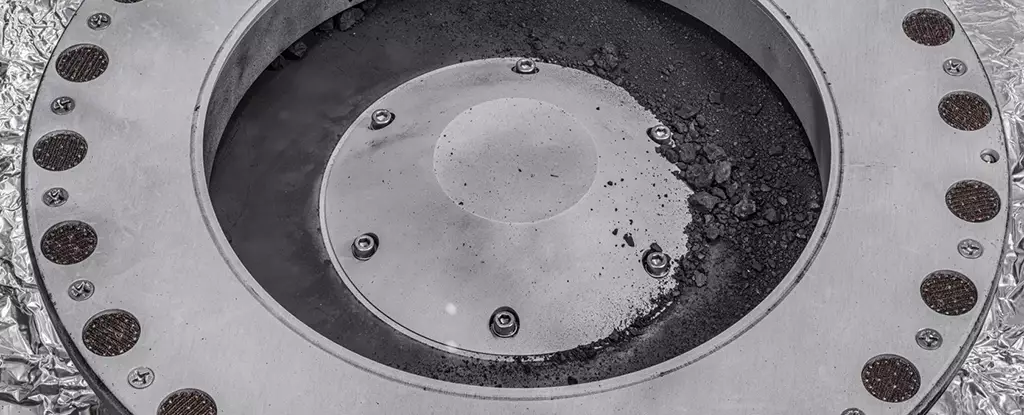NASA scientists have embarked on an exciting journey of analyzing fragments brought back from the Bennu asteroid. These early analyses reveal that the material found on Bennu suggests its origins in an ancient ocean world. What makes this discovery remarkable is the phosphate crust detected on the asteroid, a calcium and magnesium-rich mineral that has never been observed before on meteorites. This mineral bears a striking resemblance to the composition of vapor shoots found beneath the icy crust of Enceladus, one of Saturn’s moons. Its presence on Bennu holds great significance as phosphate is a fundamental building block of life. This reinforces the hypothesis that life on Earth may have been initiated by materials left behind by asteroids during the tumultuous early history of our planet.
The Destructive Birth of Bennu
The scientists further suggest that the world Bennu was once a part of likely shared similarities with Enceladus but was roughly half its size. As the Solar System evolved, this world was obliterated through a collision with another object, giving rise to thousands of asteroids. The opportunity to study samples from an asteroid is a rare occurrence, making these investigations highly exhilarating for the scientific community. The OSIRIS-REx mission is only the third instance in history where we have successfully collected fragments from an asteroid and safely returned them to Earth. The round trip took an extensive seven years, covering a staggering distance of 6.21 billion kilometers (3.86 billion miles). With the safe return of the sample capsule in September 2023, researchers are eager to commence their analysis.
The University of Arizona is among the many institutions worldwide that are delving into the study of the asteroid fragments. At the university, scientists are meticulously examining thousands of particles, with the largest measuring up to 3.5 centimeters (1.4 inches) in diameter. Various techniques, such as X-ray diffraction, are being employed to understand the nature of the material. X-ray diffraction involves the analysis of patterns of electromagnetic radiation to glean valuable insights into the composition of the samples. It is believed that these remnants from Bennu represent pristine material from the early formation of the Solar System, which occurred approximately 4.5 billion years ago. By deciphering their origin, we can unravel the mysteries of our own origins.
While this research is still in its nascent stages, it holds tremendous prospects for uncovering more revelations in the future. One such possibility is confirming the type of planetesimal that gave birth to Bennu. As scientists dive deeper into their analyses, more discoveries and insights are expected to emerge, reshaping our understanding of the cosmos. The findings made thus far will be presented at the esteemed 55th Lunar and Planetary Science Conference, held in Texas.
The analysis of the fragments brought back from Bennu is proving to be an unprecedented opportunity for scientists to study a part of an asteroid. The phosphate crust found on Bennu, resembling that of Enceladus, adds weight to the hypothesis that asteroids played a crucial role in the emergence of life on Earth. As we continue to unravel the secrets of Bennu’s origins, we embark on a journey that not only teaches us about our past but also offers profound insights into the evolution of our Solar System. The discoveries made through this mission pave the way for future space explorations, fostering our curiosity and expanding the boundaries of human knowledge.

Leave a Reply